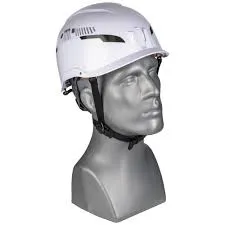fireman safety helmet
The Importance of Fireman Safety Helmets
Firefighting is an inherently dangerous profession. Firefighters are often the first responders to life-threatening situations, battling blazes and rescuing individuals trapped in hazardous environments. To perform their duties effectively and safely, firefighters rely on specialized equipment designed to protect them from the myriad dangers they face. Among the most critical pieces of gear is the fireman safety helmet.
Design and Functionality
Fireman safety helmets are engineered to withstand extreme conditions. Typically made from robust materials like thermoplastic or reinforced fiberglass, these helmets offer superior protection against heat, impact, and penetration. The outer shell is designed to resist high temperatures and prevent melting, while the inner liner provides cushioning and shock absorption to protect against blunt force trauma.
One of the key features of fireman helmets is their ability to shield firefighters from falling debris and other unforeseen hazards in a burning structure. During firefighting operations, ceilings may collapse or dangerous materials may combust, creating a dangerous environment full of unpredictable threats. The helmet serves as a first line of defense, minimizing the risk of severe head injuries.
Thermal Protection and Visibility
In addition to impact resistance, fireman safety helmets are equipped with thermal insulation to protect against extreme heat
. Firefighters often work in environments that can reach temperatures well over 1,000 degrees Fahrenheit. Helmets are designed to reflect heat away from the head, allowing firefighters to maintain focus and efficacy during emergencies.Visibility is another critical consideration in fireman helmet design. Many helmets come with integrated visors or face shields that protect the eyes and face from heat, smoke, and debris while still allowing for clear visibility. The helmets are often brightly colored—commonly in shades of yellow, red, or orange—to enhance visibility to other team members and to the public in chaotic environments.
Communication Devices
fireman safety helmet

Modern fireman helmets may be outfitted with communication devices, enabling firefighters to maintain contact with their team while navigating through fires. This communication is vital in ensuring coordinated efforts and enhancing safety during operations. Clear communication minimizes confusion and allows firefighters to quickly alert their teammates to potential dangers, enhancing overall situational awareness.
Innovations and Enhancements
As technology advances, so too does the design of fireman safety helmets. Manufacturers are continuously innovating, integrating features such as built-in lights for improved visibility in dark environments, air circulation systems to keep firefighters cool, and even thermal imaging cameras. These enhancements not only improve safety but also allow firefighters to operate more efficiently.
Furthermore, the development of customizable helmets allows for personalization with the addition of department logos, names, and specific identification numbers, fostering a sense of identity within fire departments.
Training and Compliance
While the safety helmet itself plays a crucial role in protecting firefighters, proper training and adherence to safety standards are equally important. Firefighters must be educated about how to properly wear and maintain their helmets. Regular inspections ensure that helmets remain in optimal condition, as even the slightest damage can compromise their protective capabilities.
In many countries, fireman safety helmets must comply with strict safety standards set by governing bodies. This ensures that the helmets provide adequate protection, thus safeguarding the brave men and women who risk their lives to protect others.
Conclusion
Fireman safety helmets are an indispensable component of a firefighter's protective gear. Their advanced design, functionality, and continuous innovations play a crucial role in ensuring the safety and effectiveness of firefighters as they confront the dangers of their profession. By prioritizing helmet safety and investing in training and technology, fire departments can help ensure that their personnel return home safely after every call. Ultimately, the helmet symbolizes the unwavering commitment and bravery of firefighters, serving as a testament to their role as protectors of life and property.
-
Wholesale Safety Helmets - Cheap OEM Supplier China Manufacturer
NewsMay.30,2025
-
Top Safety Helmet Manufacturers in Japan - Durable & Certified
NewsMay.30,2025
-
Affordable 3M Safety Helmets in Pakistan Bulk Pricing & Factory Deals
NewsMay.30,2025
-
Affordable HDPE & EN397 Hard Hats - Safety Certified, Bulk Deals
NewsMay.29,2025
-
FDA-Compliant Food Safety Clothing Suppliers Health Dept Approved
NewsMay.29,2025
-
adidas safety clothing
NewsMar.07,2025
